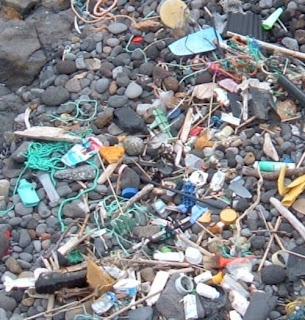Clay pots or plastic pots?
Plant in plastic pot (Photo: Public Domain)
We all know well that there is too much waste plastic polluting the environment, filling the oceans, and killing wildlife, so anything which can help cut down our use of the material has got to be good news. I have been thinking about how many plastic pots and containers for growing plants in get sold every day and how many of these containers are in use. It must be a a mind-boggling number when you consider how many of these pots are on sale in supermarkets, hardware stores and gardening centres. Nearly all of that plastic is eventually going to end up in landfill sites or in the environment somewhere!
Clay pots (Photo: Public Domain)
Clay pots showing mineral deposits (Photo: Public Domain)
The only other minor disadvantage of clay pots is that because they are porous they can absorb minerals that leach out of the compost and the water used for plants growing in them. This can create whitish powdery deposits on the outside of the clay pot. It can be washed off, however.
Clay pots for tropical fish
I remember using clay pots when breeding tropical fish species. A clay pot makes a great spawning site for many types of fish, including cichlids such as the Kribensis cichlid (Pelvicachromis pulcher), which is a very popular and easily bred species.
Kribensis (Photo: Aquakeeper 14)
Many types of fish will accept a clay pot as an artificial cave and hiding place. many will make these containers their homes and will defend them from other fish.
Buying clay pots
Unfortunately it has become a lot more difficult to find places that sell clay pots. I am lucky where I live in Portugal because the clay pots are on sale alongside the plastic ones, even at major supermarkets. I know the type of pot I choose to buy.If enough people refused to buy the plastic containers and asked for old-fashioned clay ones then the manufacturers would be forced to supply us with clay pots not plastic pots.
Watering cans (Photo: Public Domain)
Plastic is not just used for our plant pots because even watering cans are now made of the material. Seems crazy how a can can be made of plastic not metal, don't you think?











.jpg)

.jpg)